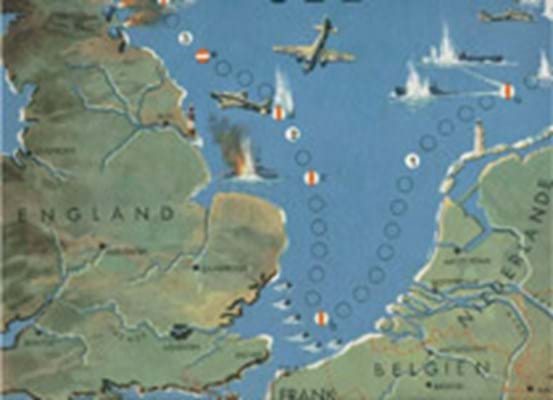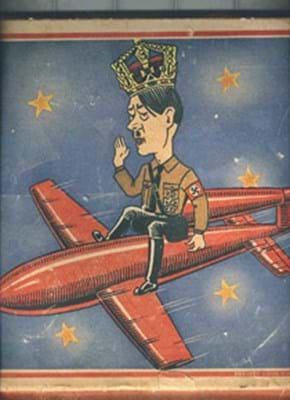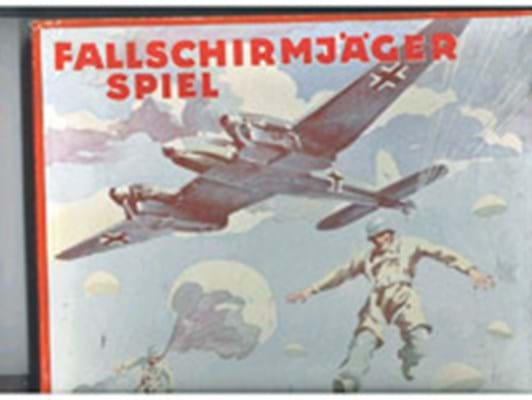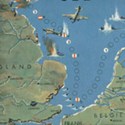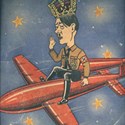But both sides in the global conflict of the 1940s went a lot further on the games front - presumably to boost morale at home and knock it on the other side of enemy lines.
Evidence of such propaganda came last week at Mullock's (15% buyer's premium) Historical Documents, Autographs & Ephemera sale held at Ludlow Racecourse in Shropshire.
With domestic laws forbidding the sale of Nazi memorabilia, the German consigner turned to a UK provincial auction room to dispose of five board games - four pro-Nazi, one anti - which largely adapted traditional children's board games for more bellicose purposes.
First up and estimated at £100-150 was Das U-Boot-Spiel (The U-Boat Game) from 1942. Featuring a chequer board with the outline maps of Scapa Flow in original box with rules (in German), and apparently in complete and unused mint condition, the game appeared to be a form of battleships, inspired by the successful destruction of HMS Royal George in Scapa Flow harbour by a German U-Boat U-47 commanded by Gunther Prien.
This was followed by an associated board game from 1941, Mit Prien gegen England (With [Gunther] Prien against England).
Again inspired by Prien, this snakes and ladders-type game set course from Wilhemshaven. A rarity, it was in its original box, which was a little distressed, and lacked some playing pieces, but was more highly estimated at £300-500.
Fallschirmjager Spiel (The Parachutist's Game), also of 1941, showed parallels with the later footballing game of Subbuteo.
Each player fixed a lead-weighted playing piece or paratrooper to a model aeroplane, using a clay compound, before 'flying over' a playing board covered with targets. By flicking the paratroopers off the plane, players scored points depending on where they landed.
The set contained six original playing pieces in 'as used' condition and two carrier aeroplanes in good condition. The estimate was £220-300.
The final game supporting the Nazis was Bomber Uber England (Bomber Over England) from 1940. Similar to bagatelle, it featured a map of the UK, northern France, Belgium and Holland, with parts of Germany and various holes in the board each assigned with a points total. Various points in the North Sea were marked, such as merchant ships and a lighthouse (attracting various points) and various cities on the mainland.
Players got 30 points for hitting Hull, 60 for Aberdeen, only 40 for Liverpool, 50 for Birmingham and 100 for London.
France is not shown as being under German control - 100 points were awarded for hitting Calais - while points lost for hitting Brussels and Amsterdam date the game to a very precise period around May 1940. The estimate was £300-500.
Finally, The V Game - estimated at £250-300 - redressed the balance somewhat, the box cover showing a crowned Hitler astride a flying bomb.
Remarkably, it is thought to originate in Belgium during the occupation (though bearing a French mark of Brevete S.G.O.G. 28620P VC), and contained rules printed in French, Flemish and English to the inside lid.
Based on the tiddlywinks principle, each player had a spring powered 'launcher' and a 'V1' (which was a bead drilled with a hole in the middle). The game board is similar to a dartboard but with various round sections in concentric rings for the V1s to be launched at.
The outer ring was worth ten points and related to various German cities including Munich, Frankfurt, Mainz and Essen. The next ring of six sections was Berlin itself (B-E-R-L-I-N), and if your V1 landed in one of those it was worth 25 points. The next ring was devoted to the Hitler Gang of Goebbels, Von Ribbentrop, Von Rundstedd, Von Pappen and Himmler. If you hit these it was worth 50 points.
The Bullseye was Hitler himself, worth 100 points.
On August 23, following mass media interest prior to the sale and a large number of hits on the auctioneer's website to view the lots, the saleroom was ready for some enthusiastic bidding. They were not disappointed. In the event, the games went considerably over estimate, several selling to the same UK buyer.
Das U-Boot-Spiel (The U-Boat Game) took a ten-times-estimate £1000; Mit Prien gegen England (With [Gunther] Prien against England) went for a quadruple-plus-estimate £1250; Fallschirmjager Spiel (The Parachutist's Game) made nearly five times the low estimate at £1000; and Bomber Uber England (Bomber Over England), the bagatelle-type game, proved the star lot of the collection, going over five times its high estimate to sell at £2600. Least successful, but still selling for more than three times its low estimate, was the anti-Nazi The V Game, which made £800.
By Ivan Macquisten
When war games were just that
OLD film footage of youngsters playing amid the rubble of the Blitz-ravaged London showed that even in our darkest hour war could be turned into a game.

